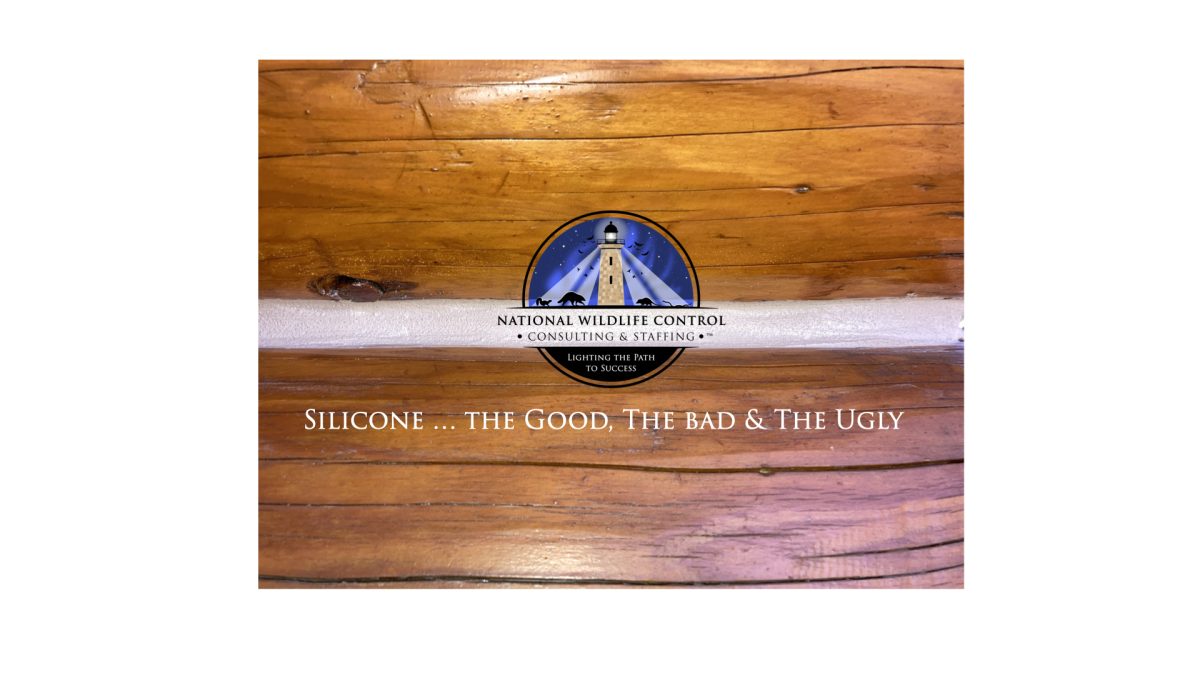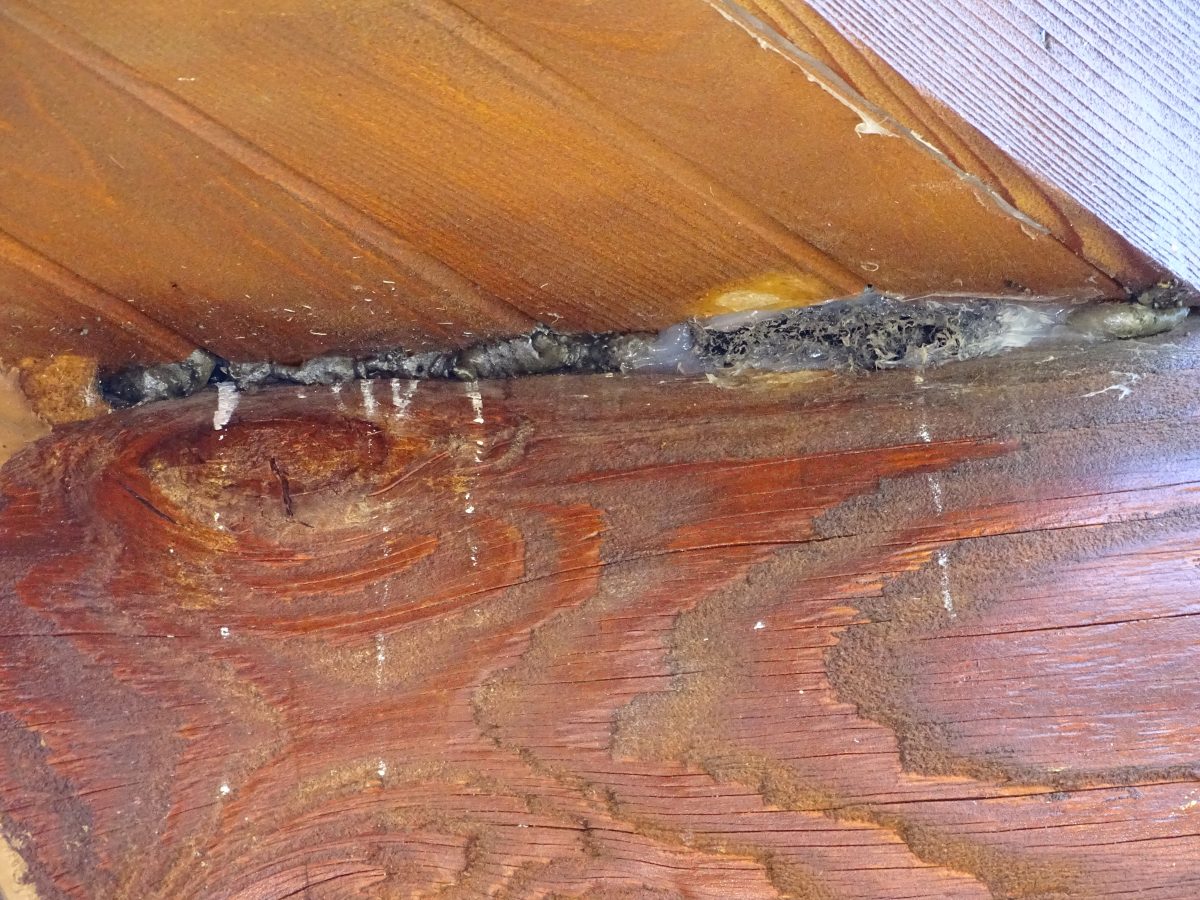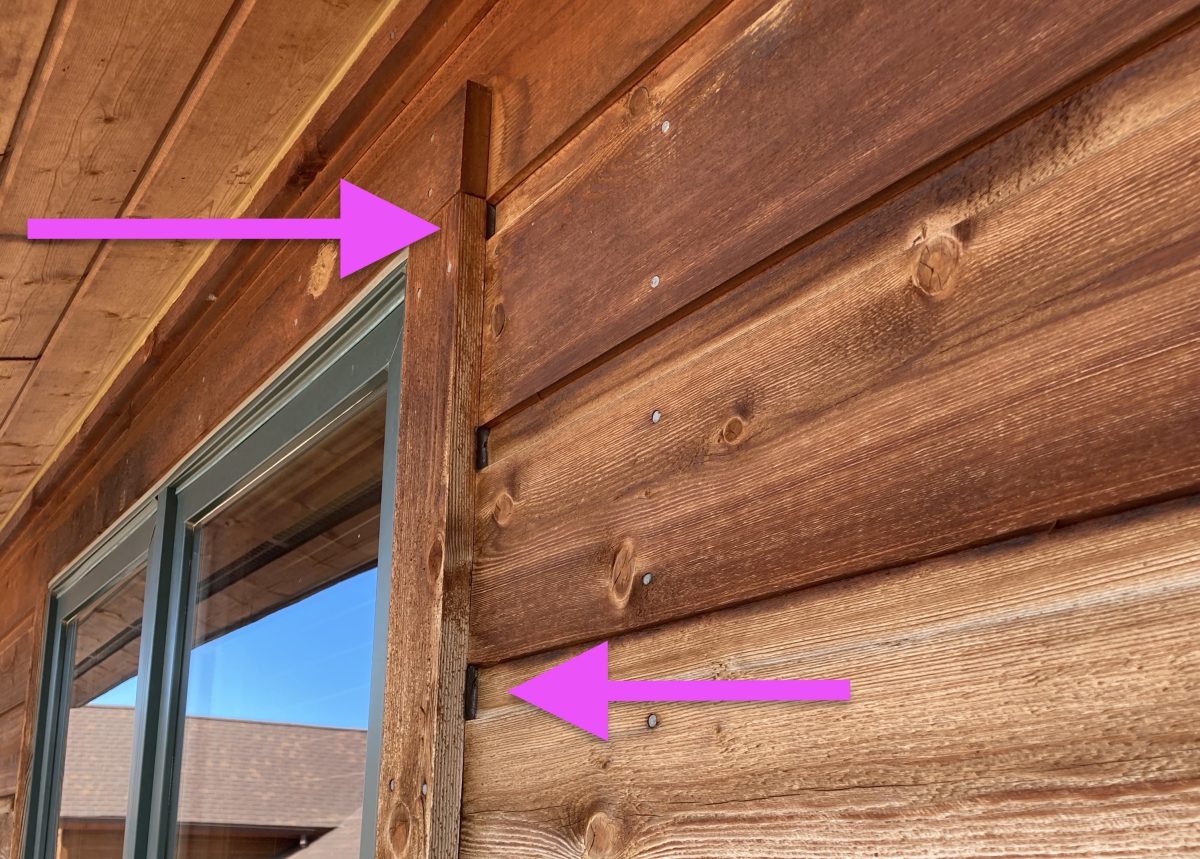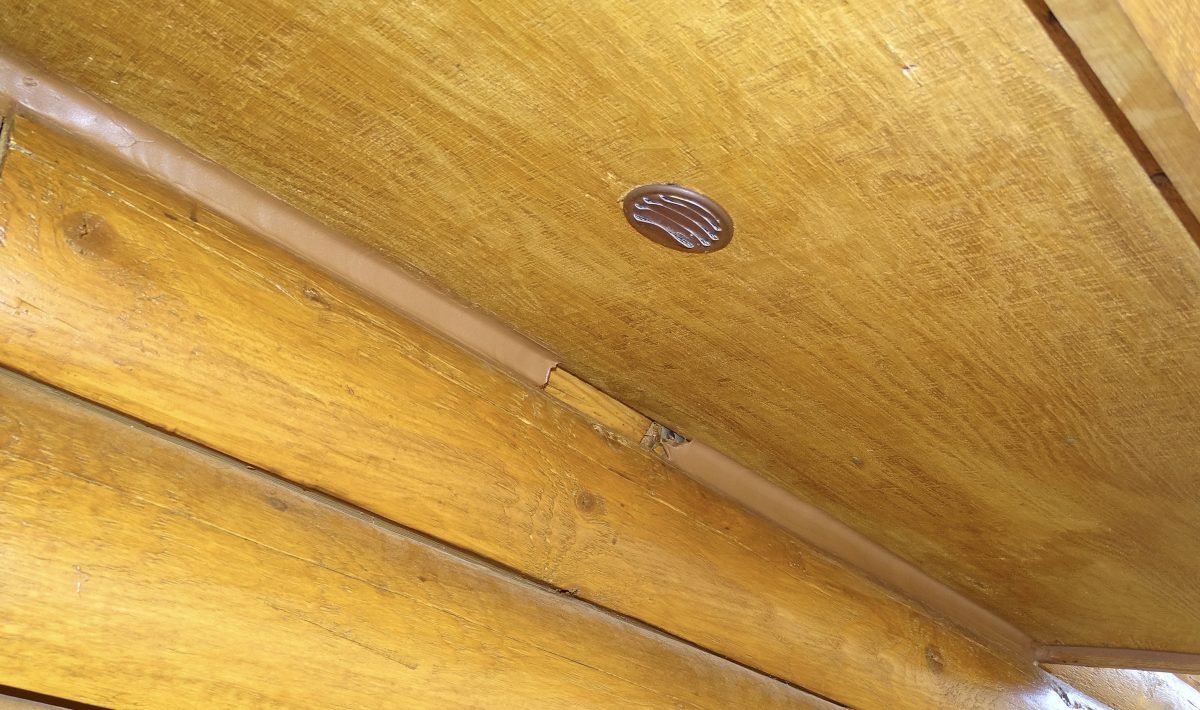Silicone … The Good, The Bad & The Ugly
Using silicone on logs & wood?

How many times in your career have you used sealants without reading the label or technical data sheet on that product? I certainly have. With this being a male dominated industry, my guess is that most of you guys have used products without researching “the instructions”! Back in the day, I used silicone on a log structure, simply not knowing any better. Many of us WCO’s have made the mistake of hastily applying sealants without understanding the long term effects that your client may have to deal with down the road. This article will help you to avoid making some costly mistakes!
Did you know that silicone based sealants should never be applied to log structures? Silicone will “leech” up to 1/2” into logs! No sealant ever will stick to silicone, including silicone, once it cures. This is particularly important when considering applications of sealants to log structures, but it also applies to other wood applications (like stained wood siding).
Let’s face it, log cabins are prone to having a lot of pest issues and sooner or later, you’ll run across one that needs some exclusion. Knowing a bit about proper sealant applications can certainly help you to avoid trouble when working on these gorgeous structures.
Silicone is widely available and inexpensive compared with many other products. It often is available in clear, which, upon initial thought, sounds pretty good. It’s a common product that can be found at just about any hardware store or many other outlets.

Pictured here is a combination of rodent Xcluder, PUR Black and Silicone, used on a log home. Using the wrong sealants can damage wood and make it difficult or impossible to properly care for logs! It looks unsightly and is far more difficult to remove than it was to install! Don’t be the technician who does this type of work!
There’s at least three great reasons why when applying sealants to wood and logs, you should avoid using silicone based products. Reason #1. Silicone, once applied, prevents the application of stain to that wood. Regular application of stain or other protective coatings to logs and other wood siding is critical to protecting that wood from UV and water/moisture damage. Stain helps preserve the life of the wood or logs by keeping them looking great and not allowing water or UV light to damage (darken) the wood, but continuing to allow the wood to “breath” so that moisture inside can still exit. Silicone based products do not allow stain to absorb into the wood because it creates a barrier that denies penetration of stains to get to the surfaces underneath. Silicone, when applied to wood, permanently coats the surface (which does offer some protection of the logs/wood), however it also preserves the wood as is and does not allow for the logs to properly “breath”. Silicone does not allow for any other sealant to be applied to it or adhere to the logs where applied. If you try to apply “Chinking” to the logs (or anyone else does, like the guy your client hires to maintain the structure), it simply won’t stick to the silicone and will peel right off as a result.
Reason # 2. Silicone based products will “preserve” the condition at the time of the application, essentially “freezing” it in it’s current state. For instance, when applied over slightly UV damaged wood, it will not allow that wood to be cleaned or brightened using wood cleaners, or even allow wood to be power washed or cleaned as the silicone has absorbed into the wood. When the client performs maintenance on the wood, nothing will alter or rectify UV damage or allow the logs to be cleaned up or preserved, so their appearance will differ from other areas that were not sealed with the silicone.
So, how does one “fix” wood that has had silicone applied over it? The answer is by cutting that wood out (remember – up to a 1/2” absorption) until you get to bare, unblemished sound wood. The other option is to have the logs media blasted down to sound wood. Neither is an easy or inexpensive option.
Reason # 3. There are so many other great looking products that will blend in and enhance the look of your clients home!
Textured wood caulking products can make the sealant blend in so well that it takes a pro to even notice that it’s there at all. Most clients will say, “Where did you seal, it doesn’t look like you did anything”. I respond, “Exactly.” You LOVE the look of your home, that’s why you bought it. It’s my job to give you your home back (and to get the non-rent paying squatters out) AND preserve and enhance your home. Our clients LOVE the way it makes their homes feel so much less drafty, solves their pest issues and looks better than we found it.
Sashco makes some great options like Conceal, LogBuilder or LogJam. For more information about these products and applications to logs and wood, check out my NWCOA webinar entitled “Mastering Sealant Applications to Logs & Wood”! You’ll surely learn a lot. If you’re a NWCOA member, click here to access the webinar (be sure to login at NWCOA.com before clicking here, and fill in the registration info and you can see it online and on-demand): https://register.gotowebinar.com/recording/4499336152496006997

Pictured above – Using the right sealant (and the right dark color), you can even make gaps appear to still be there. Used here is Conceal in Grizzly Brown (which looks just like it did before sealant was applied). Some clients really like that “rustic” look of the log checks and gaps here and there!

This type of exclusion is really an art. It takes skill, patience and the right products and knowledge. If you really want to rise to this level of perfection when working with logs and wood, consider watching the NWCOA webinar “Mastering Sealant Applications to Logs & Wood”. ***UPDATE: I’ve created a sealant course that covers so many really important tips, tricks and application techniques for our industry. Our full course (Sealants & Application Techniques for WCOs and PCOs) is an advanced, 10-hr, certified training, now available on-line and on demand! Click here to access our training website: https://nwcotraining.com/
